When a mall grows old: How Katong Shopping Centre went from ‘shopping paradise’ to maid agencies
Sign up now: Get ST's newsletters delivered to your inbox
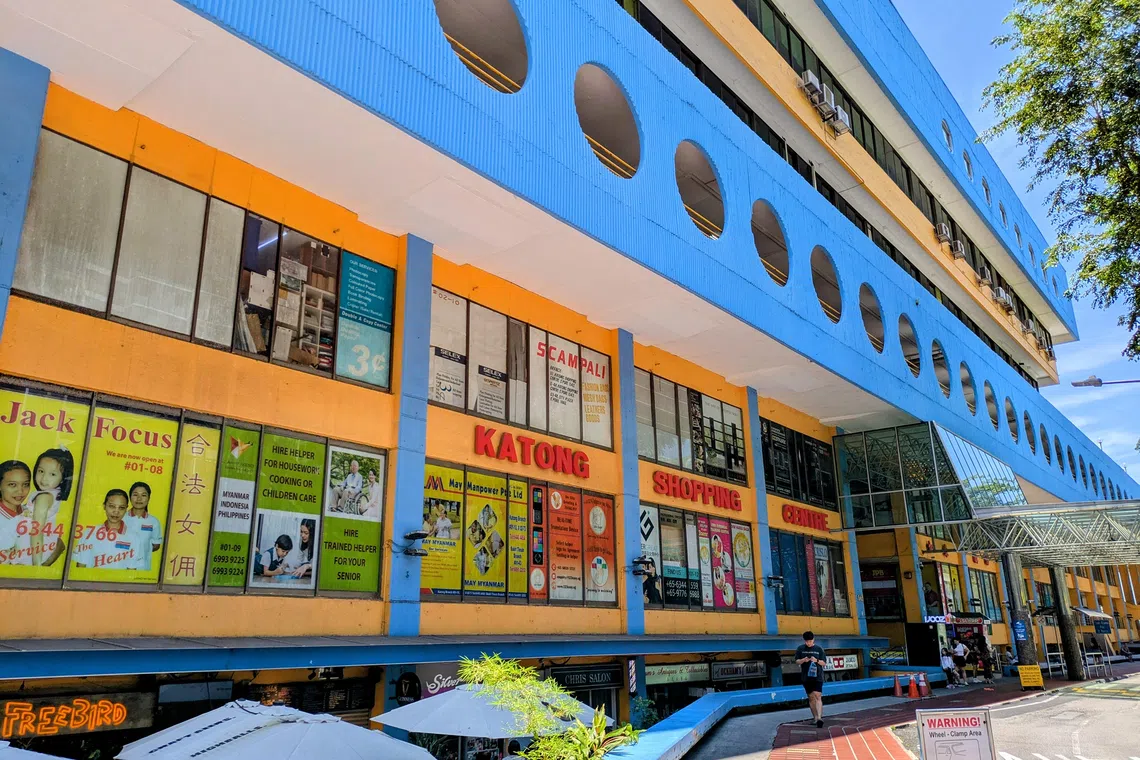
Katong Shopping Centre opened in 1973 as Singapore's first air-conditioned mall.
ST PHOTO: TEO KAI XIANG
Follow topic:
SINGAPORE – What happens when a mall grows old?
According to tenants at one of Singapore’s longest-operating malls, it exists in a sort of commercial purgatory. Not quite dead or alive, but still necessary.
Located in Mountbatten Road, Katong Shopping Centre opened in 1973 as the Republic’s first air-conditioned mall, hailed by advertisements and newspapers at the time as a “shopping paradise”.
However, the march of time has not been kind to it. When The Straits Times visits over several weekdays in September, there is little footfall and many businesses are shut.
Much of the mall has been taken over by more than 40 maid agencies, which comprise the majority of the mall’s prime ground-floor units.
Yet, many of its tenants endure – a mix of tailors, salons, massage parlours and private education businesses teaching music, alongside more niche offerings like a Taoist exorcist and a Peranakan clothing store.
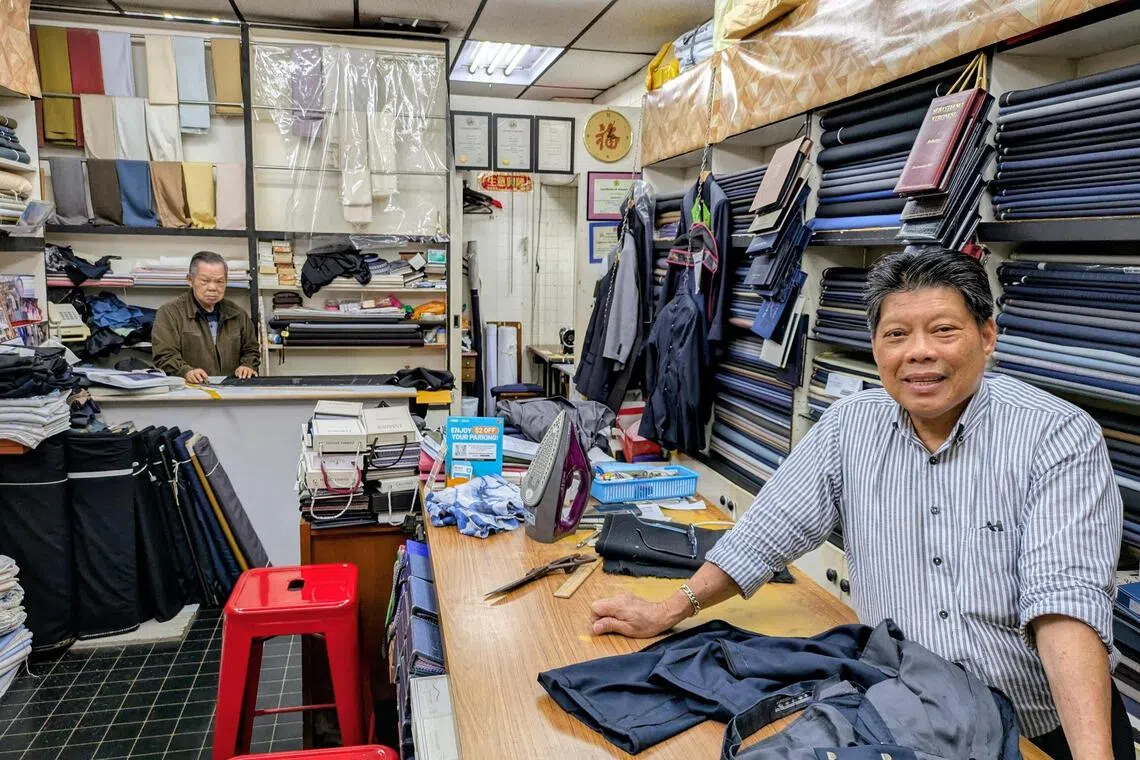
(From left) Mr Wong Chew Chung, who operates tailoring business Advance Tailor with his son Johnson Wong, has plied the trade for more than 75 years.
ST PHOTO: TEO KAI XIANG
“If I shift, I might lose 30 per cent of my customers,” says Mr Johnson Wong, 65, who has operated his father-and-son tailoring shop here for 37 years after moving from Lucky Plaza.
Mr Wong’s father, 93-year-old Wong Chew Chung, has been tailoring for more than 75 years.
With long-time customers still coming from as far as Jurong and Woodlands, Mr Johnson Wong – who owns the basement unit he operates out of – prefers that a collective sale of the property does not go through.
The year 2023 saw the mall’s landlords come together to launch a fourth attempt
Unlike Singapore’s newest malls, which are typically operated by real estate investment trusts (Reits), Katong Shopping Centre is part of a dying breed of strata malls that comprise units operated by individual landlords.
Tenants speaking to ST had mixed views about an en-bloc sale of the freehold shopping centre. Most think it is an unlikely prospect because of current economic conditions. Many hope it does not happen at all.
In the younger Mr Wong’s view, there are not many places left in Singapore for businesses like his.
Katong offers a mix of affordable rent – many tenants say they pay under $2,000 – more lax rules and less curation by operators that opt for mass-market shops over more niche or bespoke trades in their malls.
Katong’s old guard
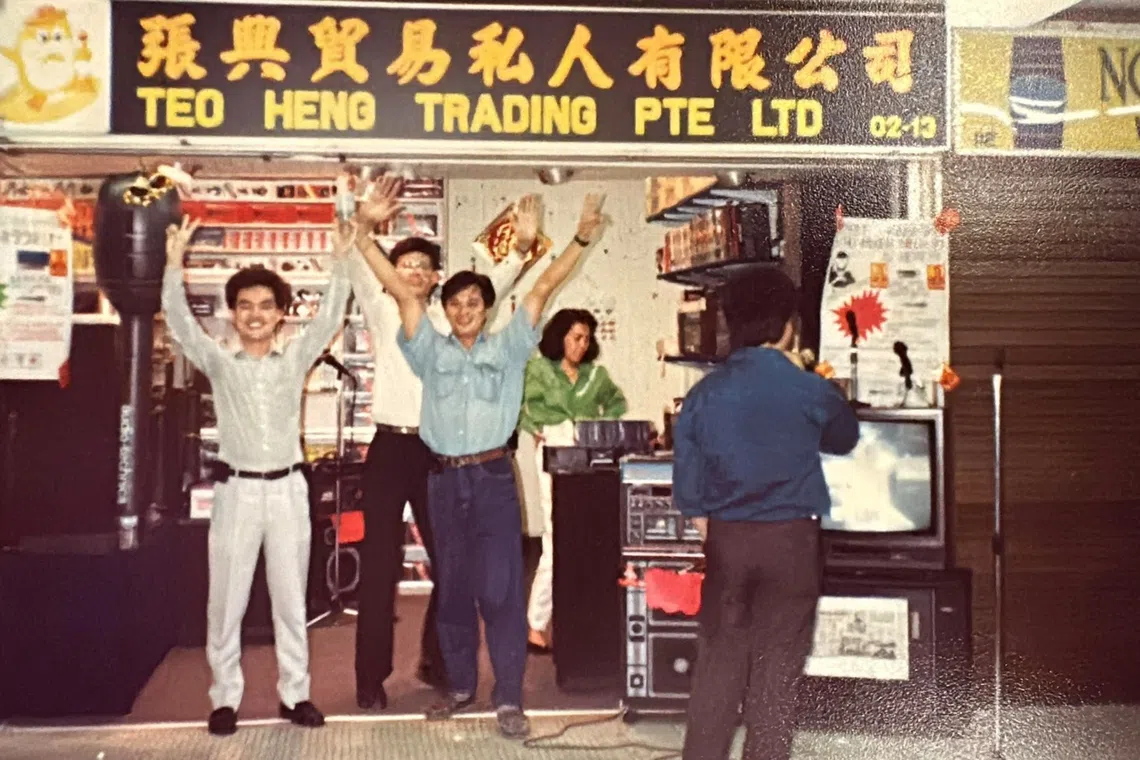
Karaoke business Teo Heng's first showroom at Katong Shopping Centre in 1989, where the family business began.
PHOTO: TEO HENG
Strata malls have long had a more eclectic tenant mix, but Mr Allen Teo, 33, says there was a time when Katong Shopping Centre was the “Lucky Plaza of the east side” – hip, buzzing and alive.
Mr Teo is the co-owner of the Teo Heng karaoke business, which was opened by his father, Mr Jackson Teo, 67, at the shopping centre in 1989.
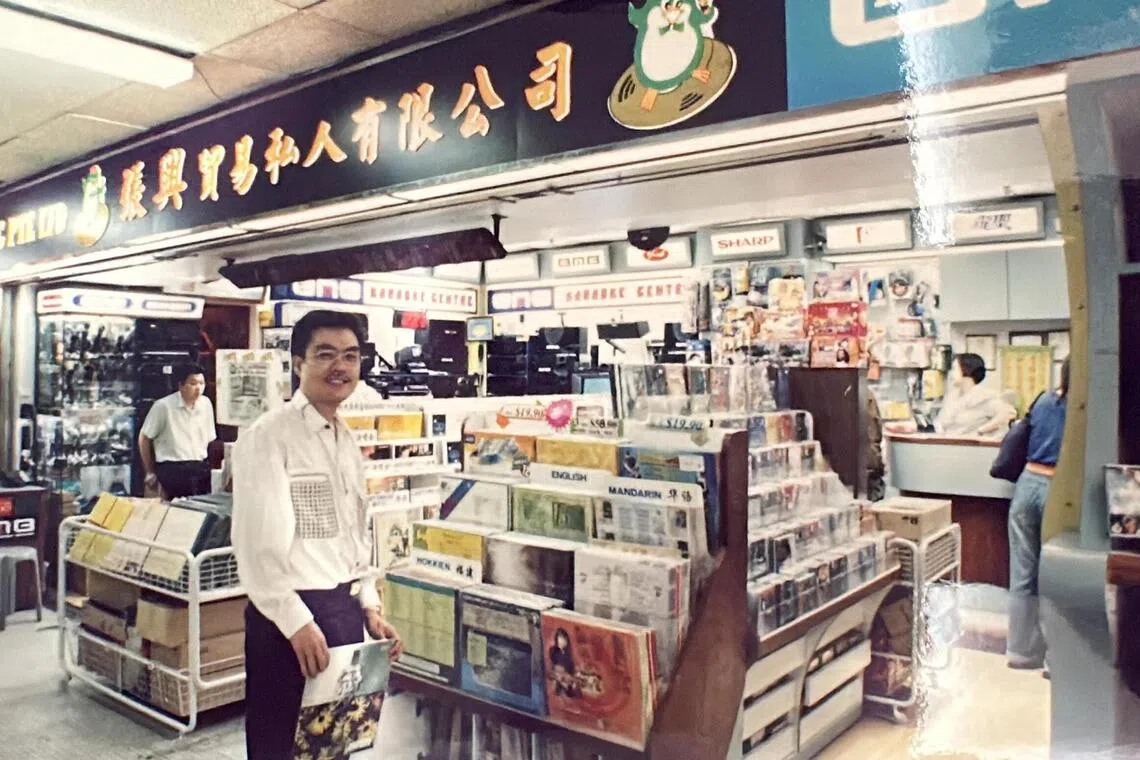
A 1997 photo of Teo Heng founder Jackson Teo at the karaoke business’ unit in Katong Shopping Centre.
PHOTO: TEO HENG
The company continues to operate its showrooms and offices here, even after shuttering its KTV rooms during the pandemic.
Looking back, Mr Allen Teo remembers a time when he would wander the mall as a child, back when it had a bowling alley, comic book stores and LAN (local area network) shops where customers would rent computers to play video games by the hour – all businesses that hark back to a different time in Singapore’s retail culture.
These days, the mall has limited appeal for young adults, he says. Most of its clientele are children dragged here for tuition classes or music lessons, and ageing regulars.
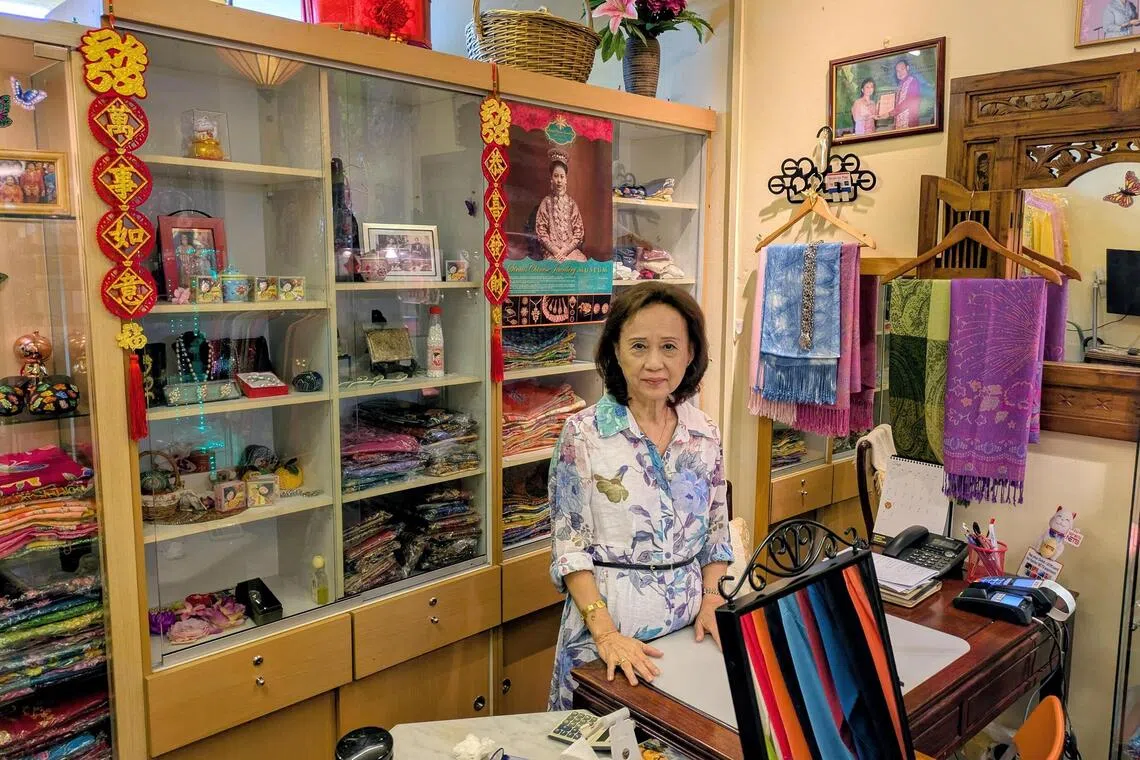
Ms Marlene Ong's store, which specialises in Peranakan fashion, has been at Katong Shopping Centre for over two decades.
ST PHOTO: TEO KAI XIANG
In the basement, long-time tenant Marlene Ong, 73, runs a Peranakan clothing store that has weathered 25 years of change at the mall.
In its heyday, Katong Shopping Centre was a go-to destination for Singapore’s Peranakan and Eurasian communities, many of whom lived in the affluent neighbourhoods nearby.
Ms Ong’s store, M Heritage, survives on a mix of ageing regulars and their referrals, children and friends, many from Singapore’s Peranakan Association.
“It’s not a brisk business, it’s survival,” Ms Ong puts it bluntly. “You must have passion. No passion, you won’t survive. You keep your culture going.”
Like many other tenants who spoke to ST, she believes the mall’s low footfall stems from the lack of an anchor tenant or the trendy restaurants that define Singapore’s newer generation of malls.
“Now, people come in only for certain things,” she says. “They zoom in and leave, not walk around.”
Still, there is a certain kinship that has emerged among tenants.
Mr Chew Teck Heng, 49, operates the Taoist exorcist family business Ghostbusters, which has called Katong Shopping Centre its home for nearly 30 years now.
The exterior facade of his business advertises exorcism as a service alongside other offerings like family harmony, destiny enhancement and career enhancement.
“We feel that it is one of the few places with old-school vibes where everyone knows one another, a rare sight in Singapore these days,” says Mr Chew.
New blood, old bones
Originally a grey Brutalist block, the mall was repainted blue and yellow in 1997.
However, it is not just old businesses that are still holding on to these old bones. Many of the mall’s new-blood tenants spy opportunity where others see only obsolescence.
Among the mall’s newest tenants are physiotherapist Janarthanan Rajarahm, 39, and personal trainer Gautam Thanggamani, 28, of J R Physiotherapy. They moved into a second-storey unit in January, paying rent of around $1,500.

Personal trainer Gautam Thanggamani (left) and physiotherapist Janarthanan Rajarahm, who share a second-storey unit, are among the mall's newest tenants.
ST PHOTO: TEO KAI XIANG
“It’s not as though we need visibility, it’s more that we need space,” says Mr Janarthanan, who notes that social media marketing accounts for much of their business.
Having an affordable base also matters more than having one with high foot traffic, as their work often takes them across Singapore.
Meanwhile, Ms Teo Lee San, 60, moved her collectibles business, Gems in Art, here from Chinatown Point in 2016, which saw her rent plummet from around $10,000 to under $2,000.
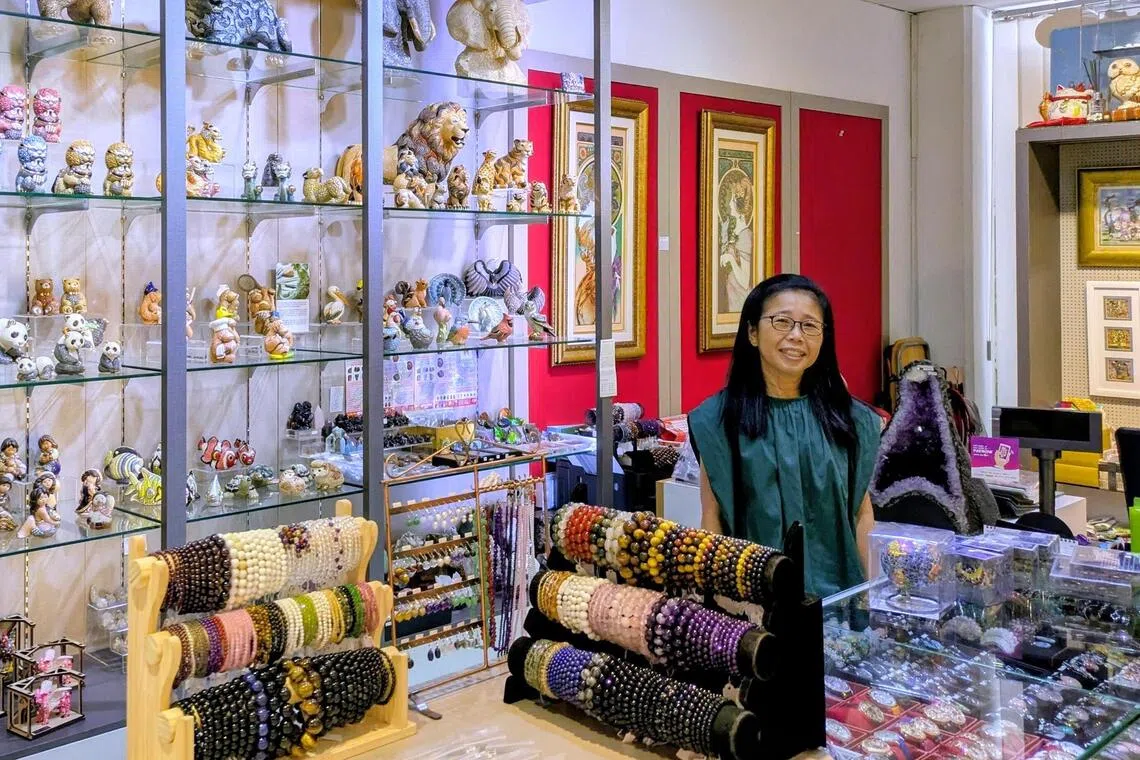
Collectibles store owner Teo Lee San says she appreciates strata malls’ more lax regulations for businesses.
ST PHOTO: TEO KAI XIANG
To her, the trade-off of having fewer walk-in customers matters less, as much of her business comes from repeat customers and other businesses she distributes to.
What matters more to her is the flexibility of being in a strata mall, where there are less rigid requirements around things like operating hours.
Here, there is no expectation that one needs to open every day.
“These units here are purchased by individual owners,” she says, “so it’s more flexible.”
Another new-blood tenant, Mr Harry Lee, 36, picked Katong Shopping Centre as the site for his bar, Free Bird, in 2021 during the Covid-19 pandemic. The mall’s affordable rent and generous space for outdoor seating – something he thinks is increasingly rare in Singapore – were the main draws.
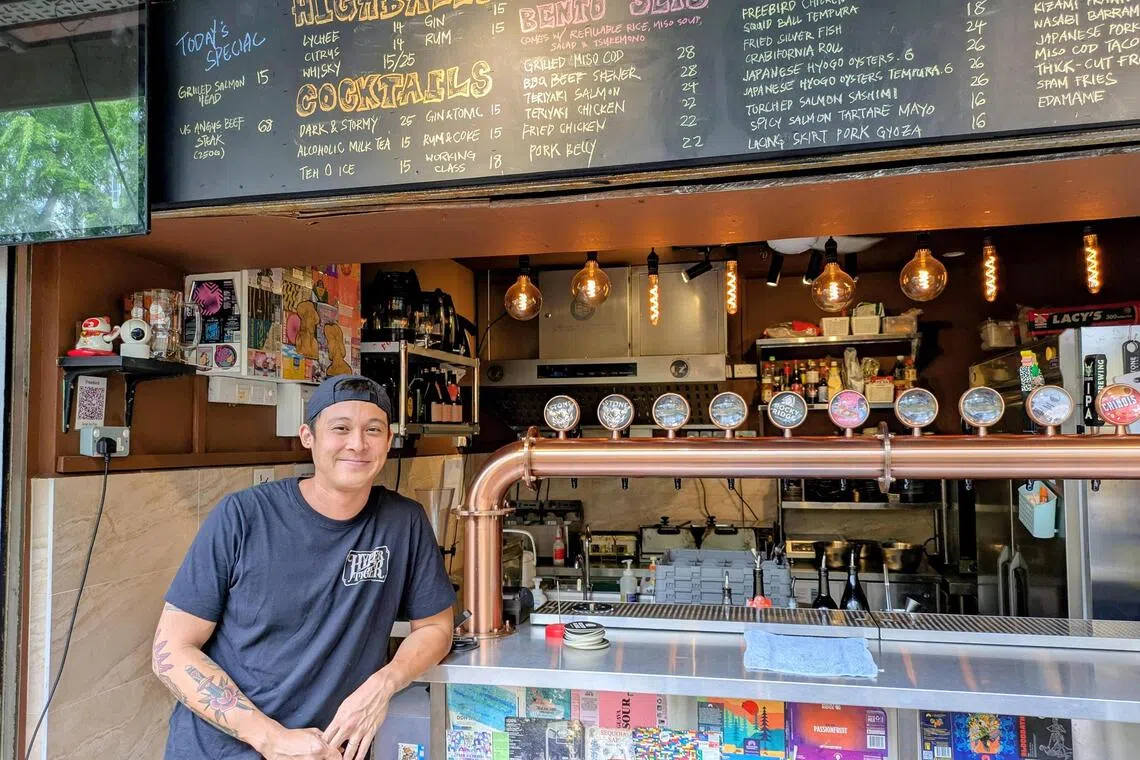
Mr Harry Lee of Free Bird is glad that older malls like Katong Shopping Centre exist, as they offer affordable rental.
ST PHOTO: TEO KAI XIANG
But so was the nostalgia. Mr Lee recalls many teenage afternoons playing video games like Left 4 Dead (2008) in the mall’s now-defunct LAN shops.
This nostalgia also keeps shops afloat. He says that business has been good for this neighbourhood bar, which considers mostly nearby residents and expatriates as its regulars.
Still, he hopes Katong Shopping Centre’s management can invest more to improve the mall and attract more tenants – a common sentiment among tenants.
A mall of misfits
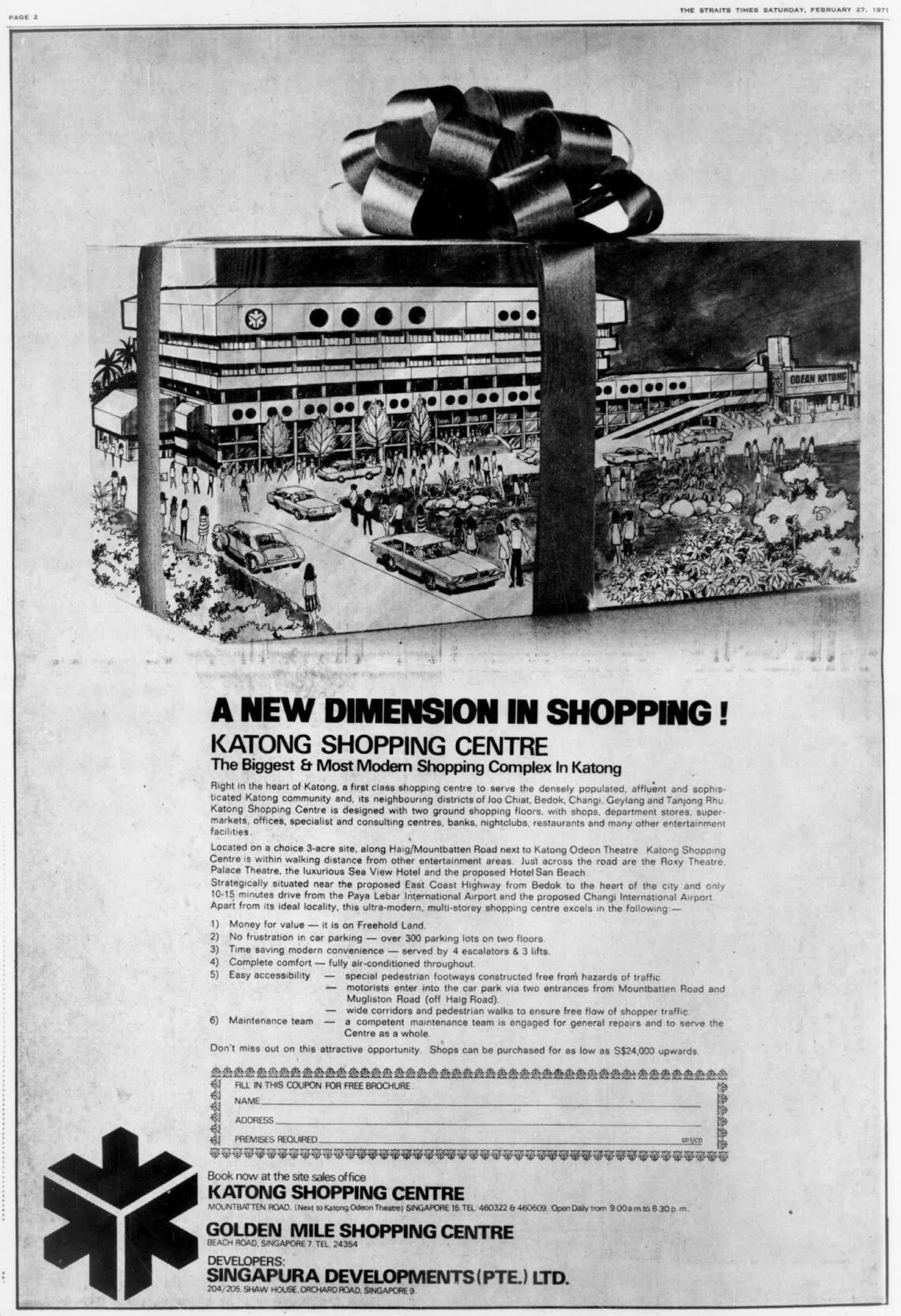
A 1971 advertisement for the Katong Shopping Centre published in The Straits Times.
PHOTO: ST FILE
Katong Shopping Centre’s woes are not new. As far back as 1998, it was featured in an ST report alongside other older shopping centres such as Beauty World and Thomson Plaza as “the malls that time forgot”.
By that point, strata malls had already gone out of fashion, with Reit-owned malls seen as the future for their superior ability to curate a complementary tenant mix and organise renovations and redevelopment.
What Katong Shopping Centre lacks in modern amenities and polish, it compensates for in peculiarity and history, says East Coast resident Prashant Somosundram, 45. The former general manager of now-defunct indie cinema The Projector conducts heritage tours in the area.
“Reit-owned malls mostly have the same template,” he says. “Strata malls have their own character. They’re more organic in the way they evolve.
“Also, they tend to have businesses you may not be able to find in a Reit mall because they are so off-kilter.”
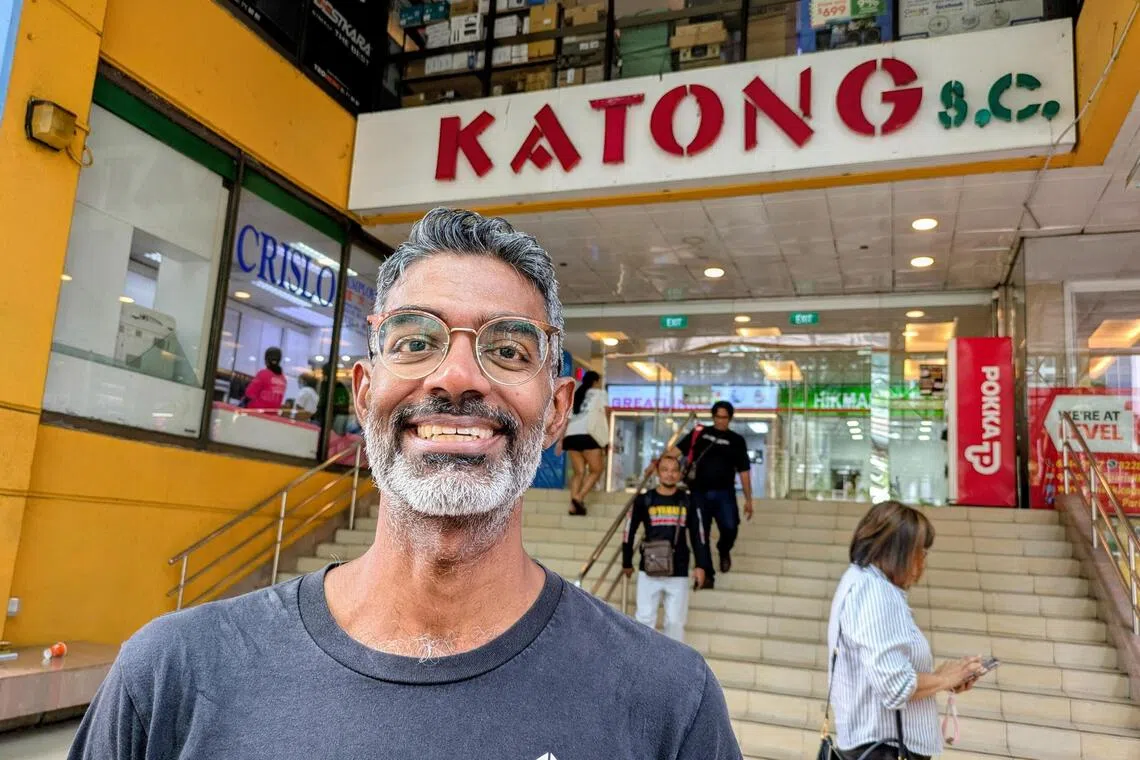
Heritage tour guide Prashant Somosundram says strata malls like Katong Shopping Centre have a distinctive, off-kilter character.
ST PHOTO: TEO KAI XIANG
This character manifests in unexpected ways. Katong Shopping Centre is home to a host of niche tenants like the International Left-Hand Calligraphy Association, a tarot card reader and the Taoist exorcist. It is even the site where an unusual rivalry between banana pie bakeries unfolds.
In the basement, two bakeries specialising in banana pies operate in neighbouring units. The first bakery to open, Dona Manis, did so in 1992 and is one of the mall’s most enduring tenants, drawing in regulars with its $3.50 slices of banana pie.
However, after the death of one of its co-owners, a former co-owner of Dona Manis opened up Auntie Peng’s next door in 2024, offering $3.30 slices of banana pie – and sparking online speculation about a possible feud.
For the record, this writer’s taste buds find that Auntie Peng’s slices are creamier and juicier, while Dona Manis’ pies are sweeter and chunkier.
Is new always better?
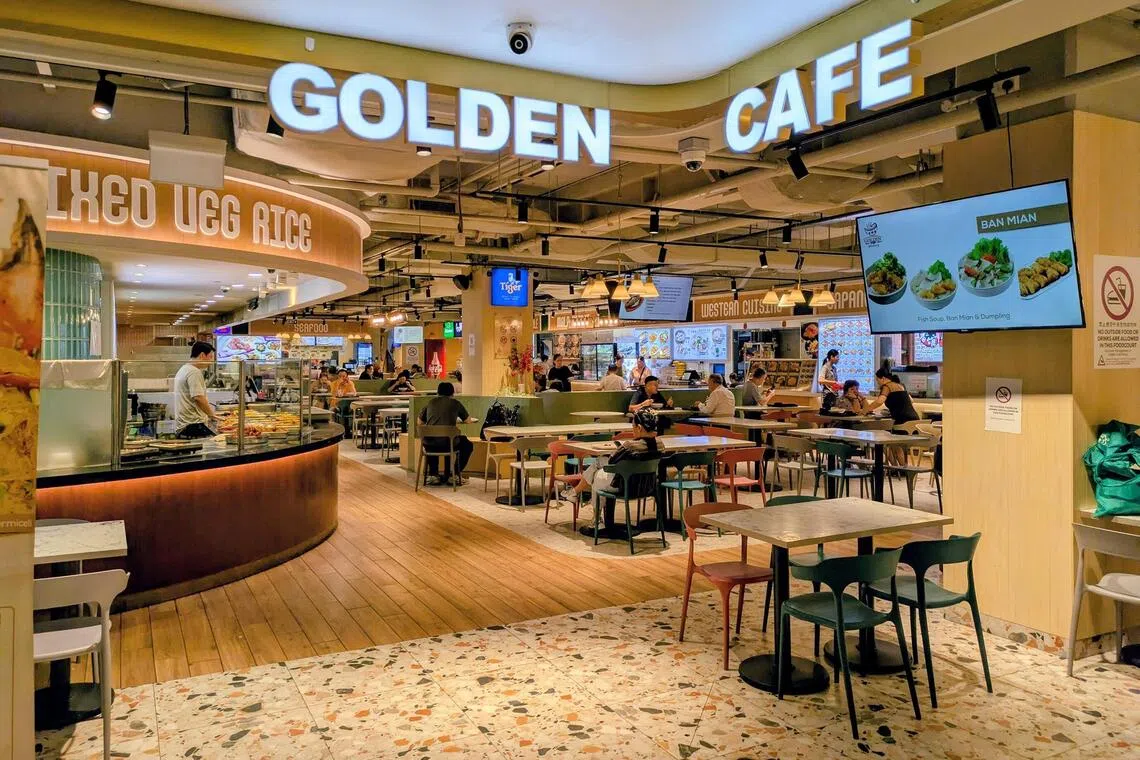
The mall’s foodcourt is a recent addition that opened in 2022.
ST PHOTO: TEO KAI XIANG
Online, netizens often decry the growing sameness of Singapore’s mall culture, with appeals to a mythical and nostalgic time when malls were different and quirky.
Typically, these ruminations occur when a space undergoes redevelopment after a collective sale, like Peace Centre’s sale en bloc in 2021.
There is perhaps no better illustration of the clash between the mall culture of the future and the past than in Katong Shopping Centre’s basement.
Among the mall’s more recent additions is a foodcourt that opened in 2022, complete with all the kopitiam staples like Western food, mixed vegetable rice and mala hotpot.
During a visit by ST at lunchtime on a weekday, this foodcourt is emptier than its older counterpart in the mall.
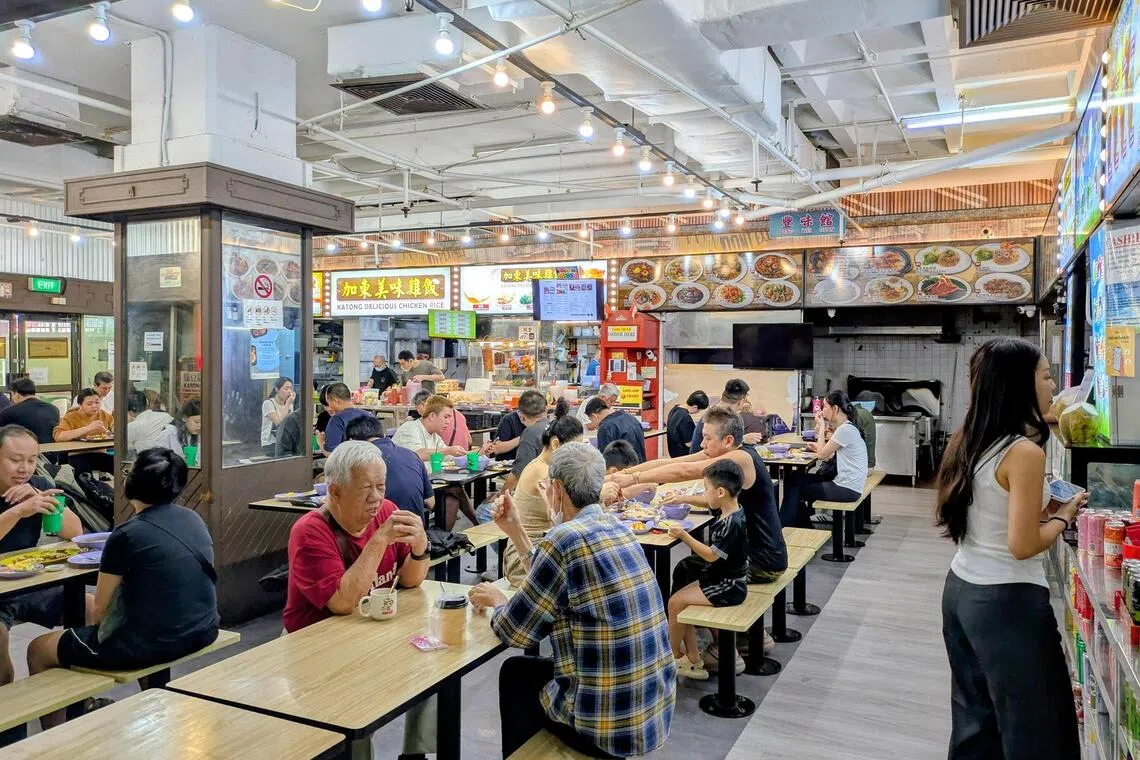
Long-time tenant Katong Mei Wei Chicken Rice is a popular draw for patrons.
ST PHOTO: TEO KAI XIANG
At the basement’s opposite end, more patrons were feasting on chicken rice from Katong Mei Wei, which opened at Katong Shopping Centre in 1989.
Run by its TikTok-famous second-generation hawker Soki Wu, the stall serves up a style of chicken rice that one would be hard-pressed to find in a typical mall. Each set comes with a generous helping of achar (Nonya-style pickled vegetables) and a peppery chicken broth with the bones still in it.
In this reporter’s eyes, this is the contrast that embodies the mall’s quirky and time capsule-like spirit.
The gradual homogenisation of mall culture can feel like an inescapable and almost gravitational pull in Singapore.
But here, in the malls that time forgot, the hold-outs remain.


